Have questions? Call 1-833-BC-WORLD (1-833-229-6753)
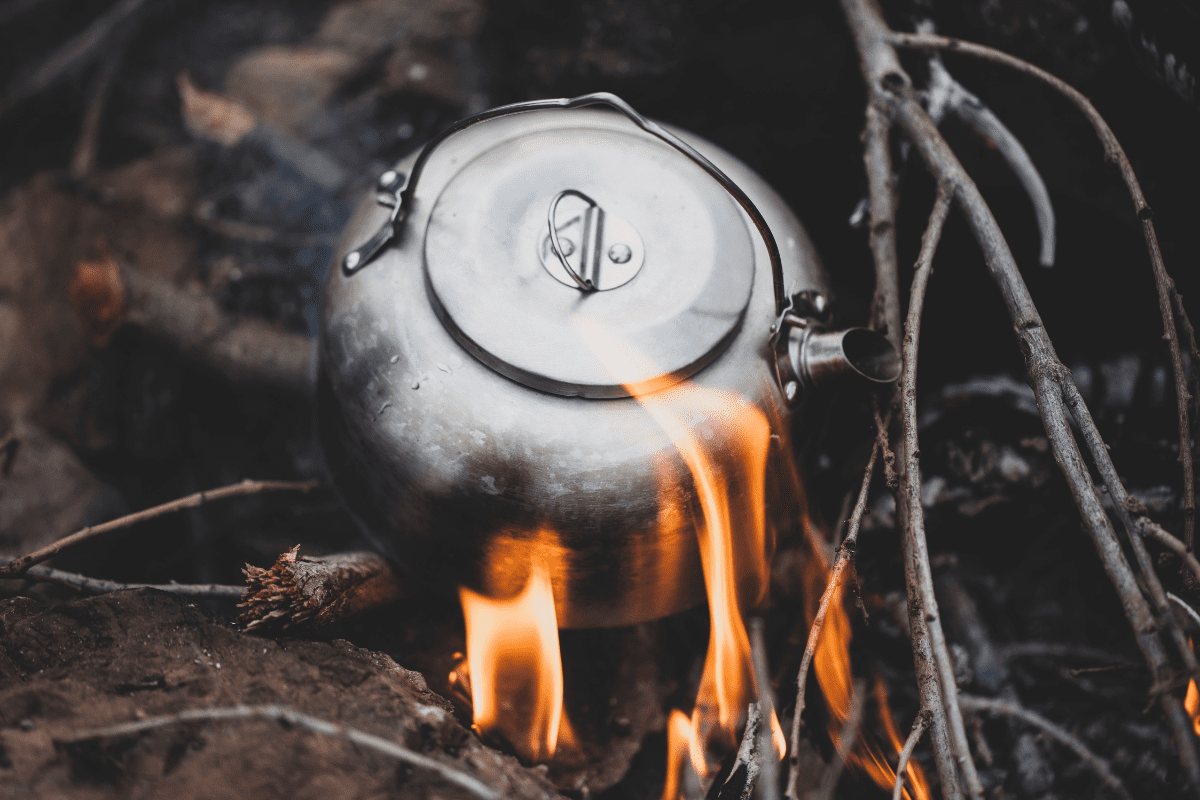
Knowing how to effectively filter and purify water in an emergency situation is something that might just save your life. Fortunately, it’s also something that can be learned pretty quickly. We have the breakdown on which emergency water purification methods are effective and how you can use them if the need arises.
When Is Emergency Water Purification Necessary?
If you live in a part of the world that has reliable and consistent access to clean water, it can be tough to imagine a situation where you need to use water purification. Unfortunately, it’s a reality that approximately 2 billion people live in every day. Creating affordable and effective water purification systems is a vital goal, and there are many situations where clean water may not be readily available in the developed world.
-
- Boil alerts
- Cyberattacks on infrastructure
- Civil unrest
- Natural disasters
- Hiking or camping emergencies
How to Purify Water in an Emergency
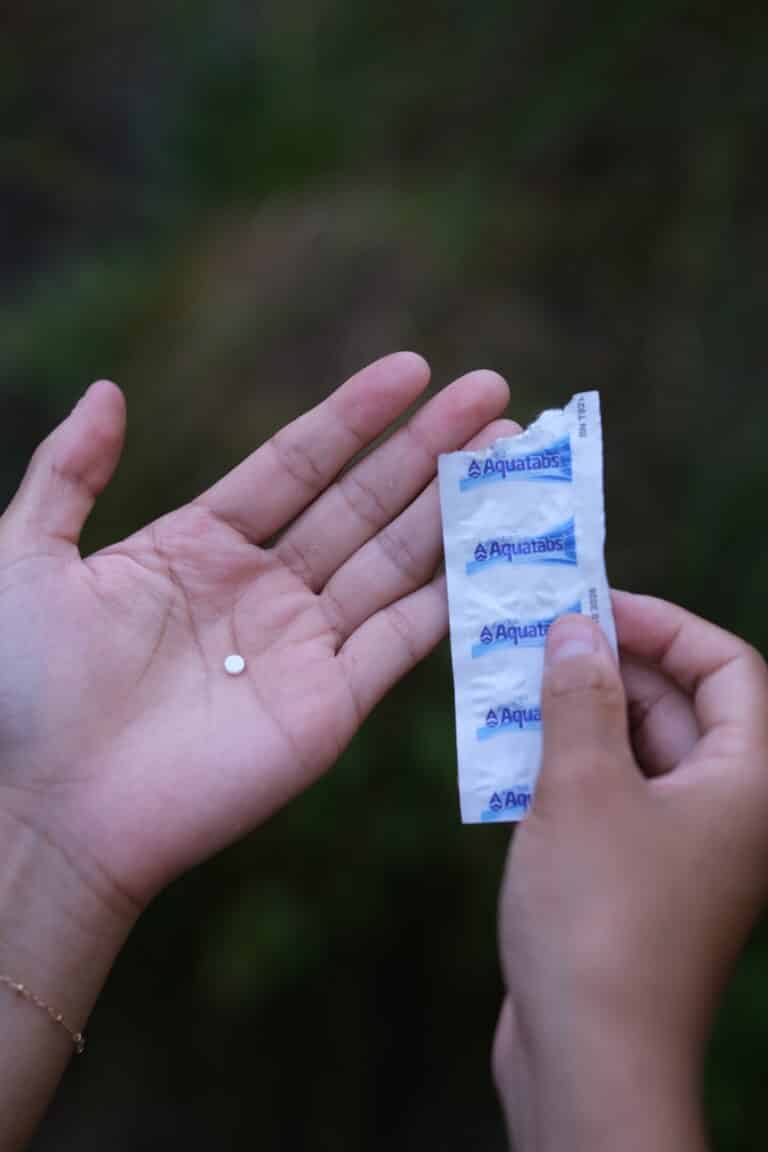
Water Purification Tablets
One of the most versatile, easy-to-use, and affordable methods of emergency water purification is Aquatabs. One 49 mg tablet can disinfect a half gallon of clear freshwater within 30 minutes, and one 397 mg tablet can purify four gallons. These chlorine tablets kill more than 99.99 percent of bacteria, viruses, and parasites such as Giardia cysts.
In order to use an Aquatabs water purification tablet, drop it into a container and mix it thoroughly for 10 minutes. A half-hour after the tablet has been inserted, the water will be disinfected and ready to drink. The chlorine released by the tablets will prevent recontamination of the water for three days in an open container and five days in a closed one.
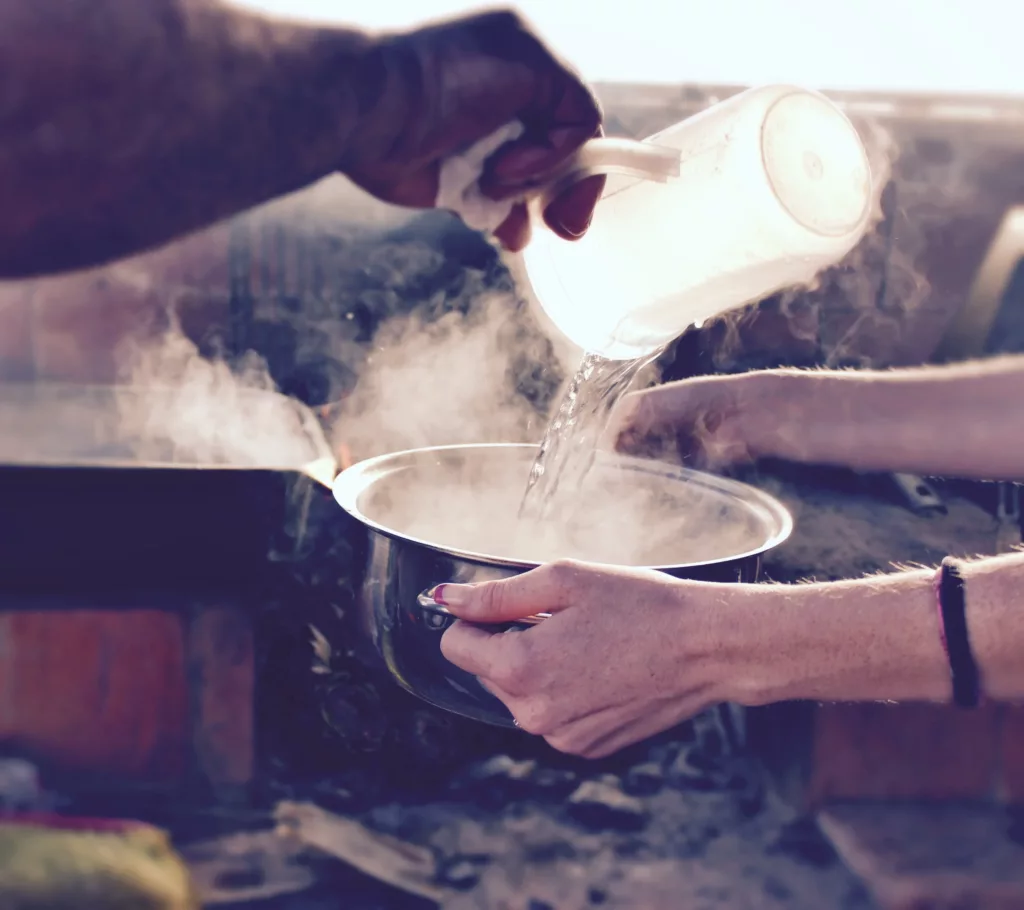
Boiling
Boiling is a tried and true method of emergency water purification, but it requires the right equipment. Health officials say that bringing your water to a full boil for at least one minute will kill more than 99.99% of microorganisms.
However, in an emergency situation, you may not be able to generate enough heat to bring your water to a full boil. In those cases, you can still kill harmful microorganisms by bringing your water to a simmer, or a minimum of 150 degrees Fahrenheit, for at least five minutes. Keep in mind that the temperature at which water simmers and boils is lower at higher elevations. In those cases, you may want to let it heat a little longer if you can’t directly check the temperature.
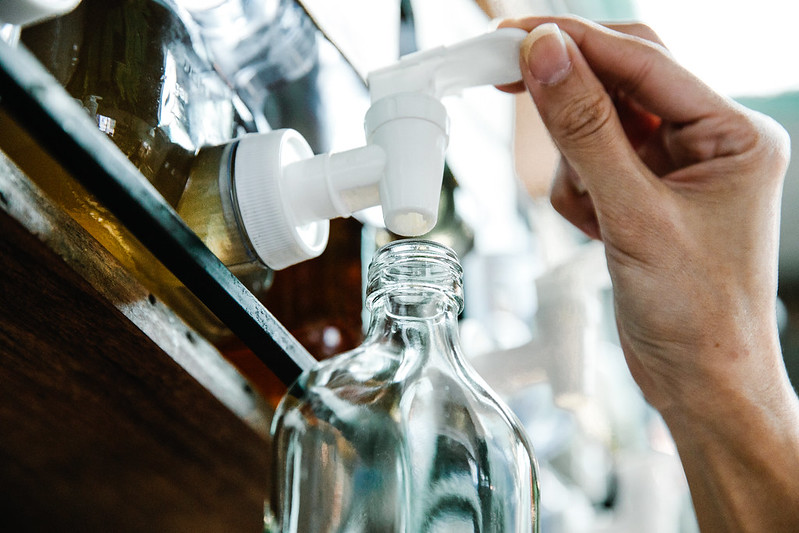
Distillation
Another step beyond boiling your water is distillation. This emergency water treatment method not only kills microorganisms but removes other materials such as minerals and sediments.
The challenge with distillation is that it requires a lot of equipment. While you may be able to keep distillation equipment at home or take it with you during a camping trip, it can’t be relied upon at all times. It also requires a lot more time than other methods, and just a single gallon of water can take several hours to distill in an emergency situation.
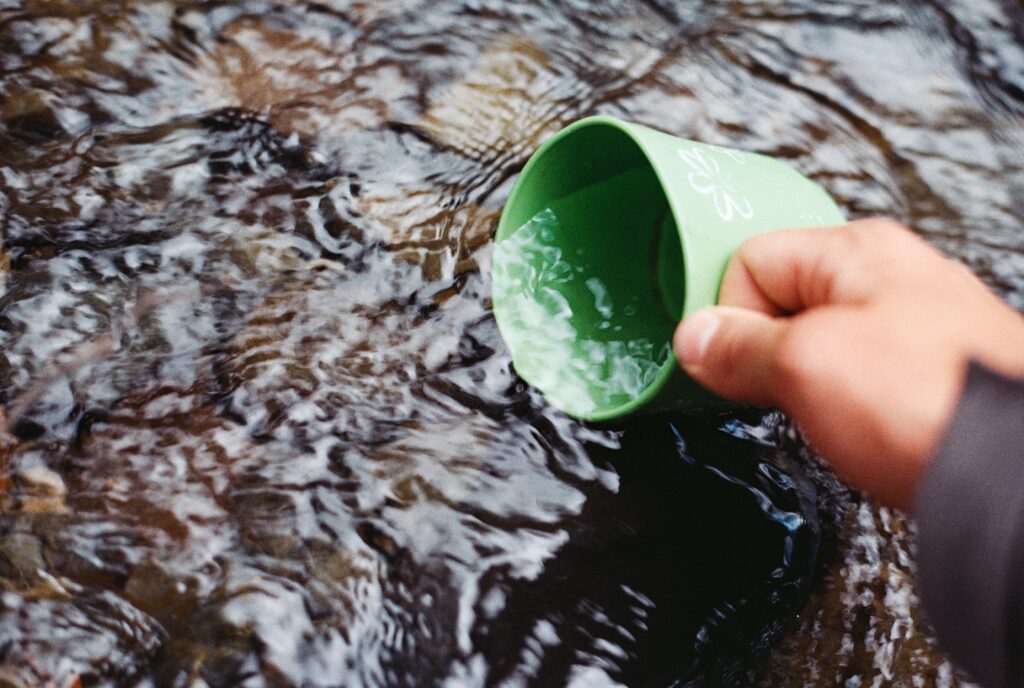
Iodine
Iodine is another option for chemical disinfection, but it is less popular than chlorine as an emergency water purifier for several reasons. It cannot be used by people who are pregnant or those with thyroid problems. Certain iodine products can also cause irritation of the hands or eyes.
However, if you are in an emergency situation, you may be able to find iodine in a first aid kit or home medicine cabinet. If you have an iodine tincture, use five drops of 2% iodine per quart of clear water or 10 drops per quart of cloudy water. Then mix the iodine and let it sit for about 30 minutes before drinking.

Solar Disinfection
In situations where you don’t have any emergency water treatment systems available, you can use the light from the sun. Fill a clear bottle of water and lay it down in the sun for at least six hours, or two days if it is cloudy. Using the sun’s rays to disinfect your water is a less thorough and reliable method than purification tablets or boiling, but it can help. It is also less effective with cloudy water, so you should filter it first if your water contains suspended materials.
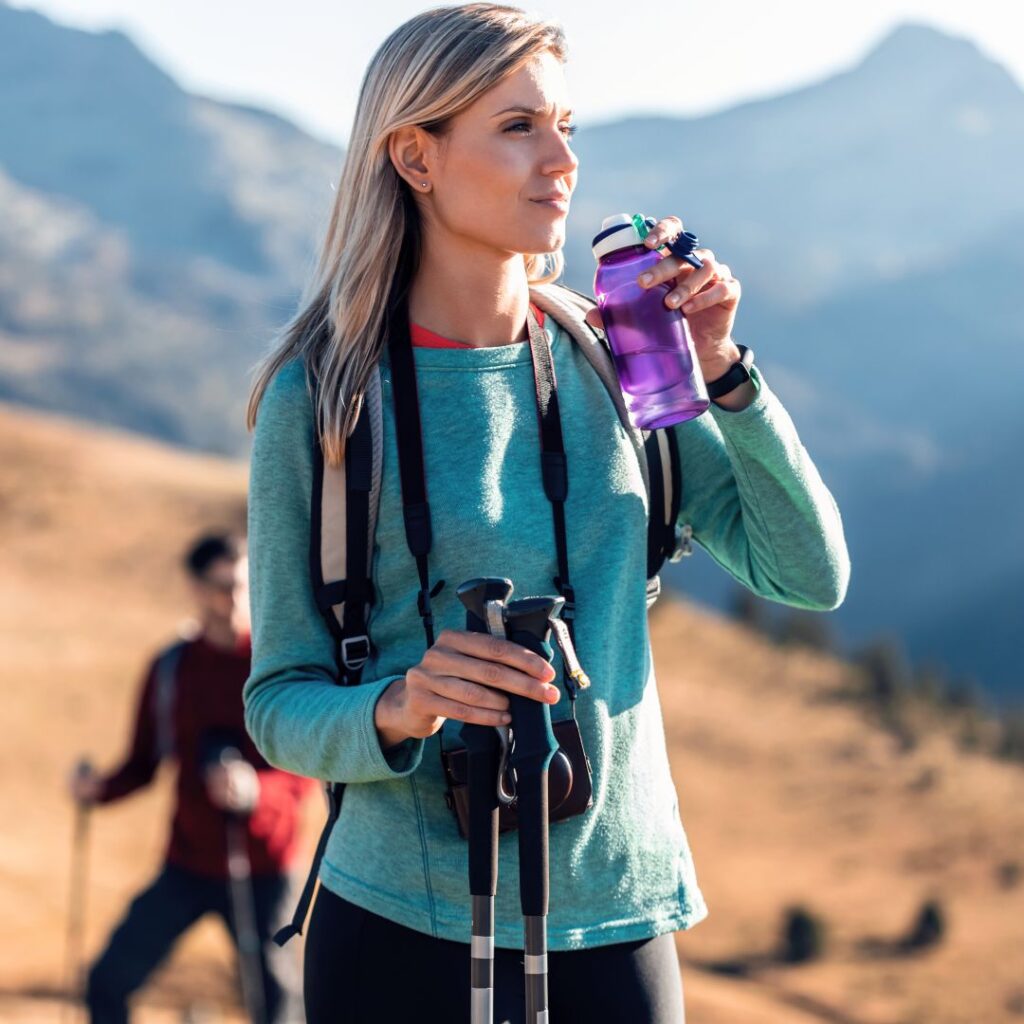
Filtration
There are many methods of filtration that you can use to ensure your water is safe. Options include filtration straws, bottles, pitchers, and jugs that can filter your water as you use it.
But if you’re in an emergency situation, you may need to make do with what you have. One popular method is to take a t-shirt or similar piece of cloth, and place one end of it into a container of water and the other end into another container placed slightly below it. As the t-shirt absorbs the water, it will slowly move to the other container.
This will take some time to complete, and keep in mind that it will only filter out suspended particles. It doesn’t remove the harmful microorganisms that can make you sick. However, it is a good first step in filtering cloudy water before using one of the other methods listed above, such as water purification tablets or solar disinfection.
What Is the Best Emergency Water Purification System?
The best emergency water purification system is the one that ensures you have enough clean, safe water to stay healthy until the emergency has passed. It is also one that’s affordable and fits your specific needs. While distillation is the most thorough method of water treatment, it’s rarely an option in an emergency.
Water purification tablets are a great choice because they are versatile, portable, affordable, and effective. A single 100-count package of 397 mg tablets can purify enough water to keep one person fully hydrated for up to 470 days—and it costs significantly less money than a home distillation machine.
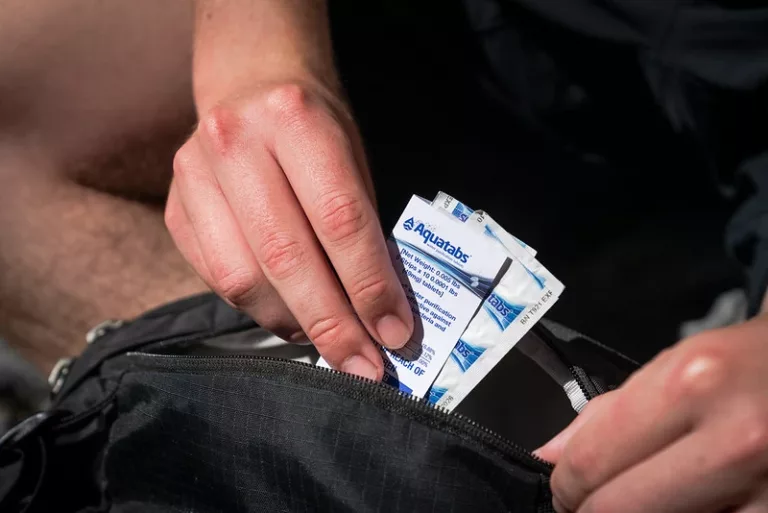
Order Aquatabs Today
Want to make sure you always have an emergency water purifier on hand in any situation? Order Aquatabs today and carry weeks’ worth of water purification in your pocket.
Recent Posts
-
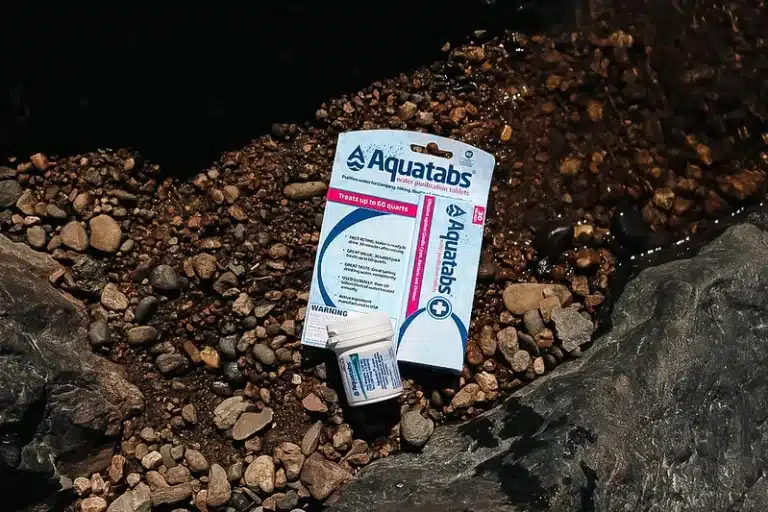
How to Use aquatabs for water purification while hiking
May 7, 2025 UncategorizedSo, you’re planning your next hike. You’ve got all the gear: your backpack, boots, binoculars—and Aquatabs to make sure you stay hydrated and healthy on.
-
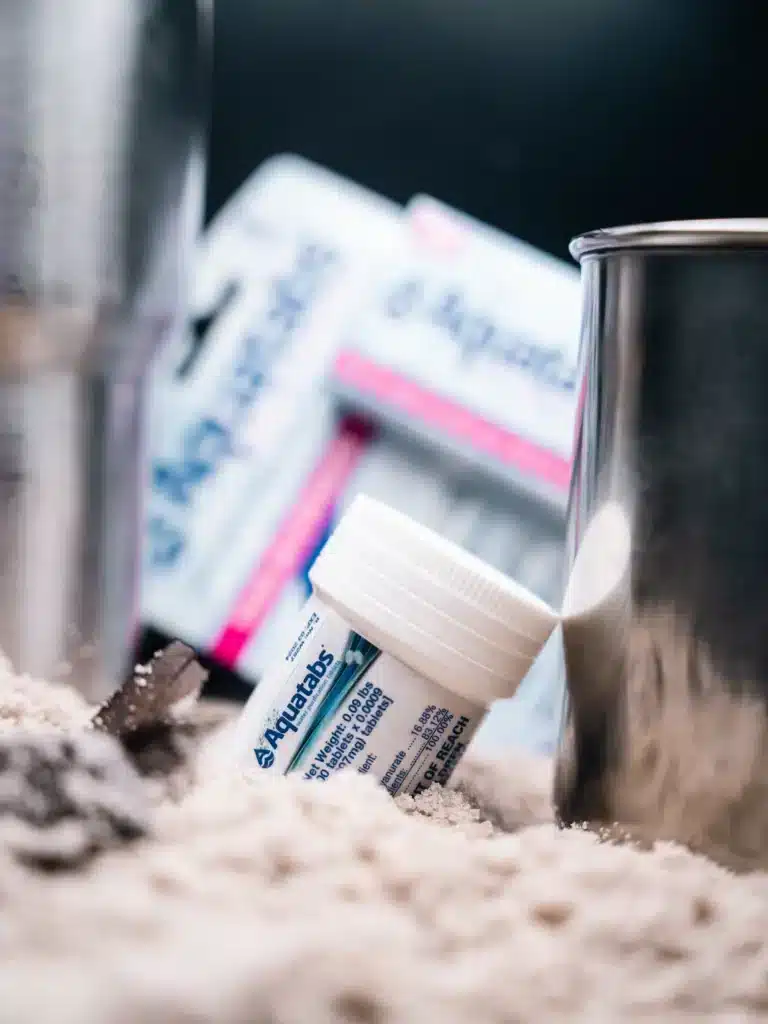
How do Aquatabs Work? The Science Behind Water Purification Tablets
April 18, 2025 UncategorizedBy: Jessica Miller Aquatabs: a fast-working water purification tablet that everyone knows and loves. However, not everyone understands how this helpful little tablet works. There.
-

Aquatabs Celebrates Women’s History Month: Historic Female Adventurers
March 28, 2025 UncategorizedBy: Jessica Miller History is not recorded objectively. Rather, it is dictated by social standards and circumstances. Although these social standards are constantly moving and.
-

Love in Every drop: How aquatabs water purification tablets help protect what matters most
February 13, 2025 UncategorizedBy: Jessica Miller February is here and love is in the air! Congratulations to all for making it through the cold length of January! Whether.
-
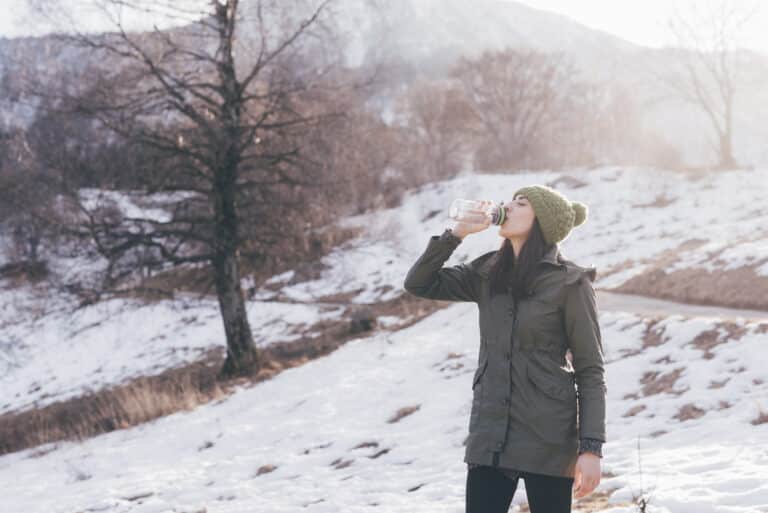
New Year's Resolution: Drink More Water
January 10, 2025 UncategorizedAs we adventure into the New Year, make staying hydrated a top priority! Protect your health at the same time by ensuring your water is.
-

Aquatabs Holiday Gift Guide | Presents for Outdoors Lovers
December 5, 2024 NewsWe know that it can be tough to find that special something for the hiker, camper, or adventurer in your life - but there’s no need to stress! We’ve compiled a list of our favorite gear so that you can choose a gift that will keep giving all year round.
Recent Posts
-

How to Use aquatabs for water purification while hiking
May 7, 2025 Uncategorized -

How do Aquatabs Work? The Science Behind Water Purification Tablets
April 18, 2025 Uncategorized -

Aquatabs Celebrates Women’s History Month: Historic Female Adventurers
March 28, 2025 Uncategorized -

Love in Every drop: How aquatabs water purification tablets help protect what matters most
February 13, 2025 Uncategorized -

New Year's Resolution: Drink More Water
January 10, 2025 Uncategorized -

Aquatabs Holiday Gift Guide | Presents for Outdoors Lovers
December 5, 2024 News

